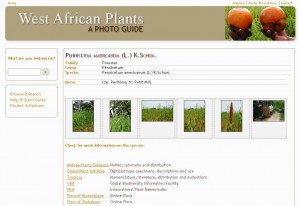So apparently, according to various tweets, Prof. David Mabberley made an impassioned plea for crop wild relatives and genebanks during a panel discussion at the International Botanical Congress in Melbourne earlier today. Will try to find out more.
Nibbles: Beetles, Assisted migration, Potato breeding, Chaffey, Malnutrition
- Beetles good for weeds. No news on effect of Rolling Stones on pests.
- When to move species. Acacias, for example?
- A gene to prevent inbreeding depression in potato. I’m kinda down myself today.
- As you were, Plant Cuttings has made me feel a whole lot better.
- Documenting Peru’s success in fighting malnutrition. Did fortification play a role? Hard to say from this, which focuses on policy, and in particular conditional cash transfers.
Tweeting the 18th International Botanical Congress
As I’ve just nibbled, the Annals of Botany bloggers are at the 18th International Botanical Congress in Melbourne, and doing a great job of reporting on emerging issues. But there’s lot of other people there too, and many of them are tweeting. You can follow them all on the #IBC18 hashtag.
LATER: Science in Public is “helping run the media program for the event.”
Nibbles: IBC18, Sustainable intensification, Macadamia, Endangered turtle, Transgenic grass skirts
- More on #IBC18 from AoB. Web 2.0 as it should be.
- EurActive.com with massive dossier on sustainable intensification in Europe. Not much diversification there, though, except for intercropping.
- Boffins look for wild macadamias with thinner shells for wimpy consumers. Well, not just that.
- The ancient Maya mixed up their turtles.
- Grass skirts latest GMO fear.
Photoguide to West African plants online

This interactive photographic guide ((Brunken, U., Schmidt, M., Dressler, S., Janssen, T., Thiombiano, A. & Zizka, G. 2008. West African plants – A Photo Guide. www.westafricanplants.senckenberg.de. – Forschungsinstitut Senckenberg, Frankfurt/Main, Germany.)) shall help you to identify higher plants from West African ecosystems. It contains images of ferns and seed plants taken in the field. You can browse through a taxonomic hierarchy and/or search according to selected characters you observe on your plant.
Have we linked to this before? I seem to remember doing so, but can’t find the evidence. Anyway, it includes cultivated plants.